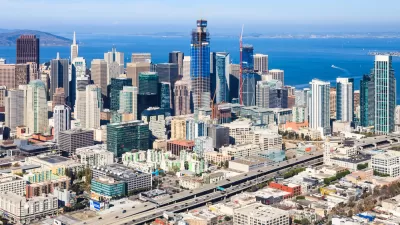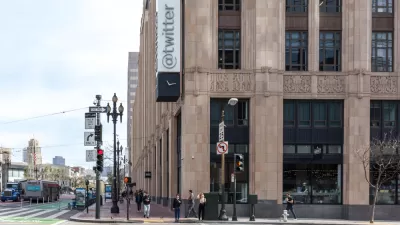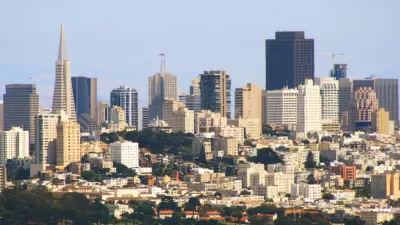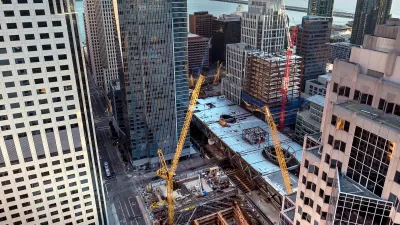Mayor London Breed’s newest proposal for revitalizing downtown San Francisco faces some sharp criticism for offering no new solutions after the city failed to deliver on goals and recommendations made in 2020.

Writing in Mission Local, Joe Eskenazi critiques the city of San Francisco’s new “Roadmap for Downtown San Francisco’s Future,” a plan aimed at revitalizing the city’s faltering downtown and reorienting it to a post-Covid future.
In Eskenazi’s view, “The Roadmap is a set of goals, and a spiffy website. But the new plan is neither new, nor a plan.” Three of Mayor London Breed’s most well-publicized proposals—“simplifying and speeding up permitting; allowing developers to defer paying impact fees; and expediting the transformation of office buildings into residential”—are nothing new, Eskenazi writes, but draw on similar proposals from a report assembled in 2020.
Unlike other cities, San Francisco didn’t actively work to attract its top new industry, tech. Thanks to a combination of factors, the industry grew up in the Bay Area, claiming many of San Francisco’s downtown office buildings. “So it remains to be seen if San Francisco’s government can artificially re-create the success it didn’t initially create,” Eskenazi believes, despite Mayor Breed’s attempt to position AI and biotech as the future of the city—prospects Eskenazi finds unlikely. Eskenazi points to poverty and crime, as well as the “devastation” of the city’s transit services, as major contributors to the central city’s decline. The article quotes David Prowler, former Director of the Mayor’s Office of Economic Development: “Keeping the streets clean and safe ‘is the normal job of government. That should not be triggered by a crisis,’” Prowler said. “These are the things government should be able to do.”
FULL STORY: Mayor’s new downtown plan is neither new, nor a plan

Planetizen Federal Action Tracker
A weekly monitor of how Trump’s orders and actions are impacting planners and planning in America.

Congressman Proposes Bill to Rename DC Metro “Trump Train”
The Make Autorail Great Again Act would withhold federal funding to the system until the Washington Metropolitan Area Transit Authority (WMATA), rebrands as the Washington Metropolitan Authority for Greater Access (WMAGA).

The Simple Legislative Tool Transforming Vacant Downtowns
In California, Michigan and Georgia, an easy win is bringing dollars — and delight — back to city centers.

The States Losing Rural Delivery Rooms at an Alarming Pace
In some states, as few as 9% of rural hospitals still deliver babies. As a result, rising pre-term births, no adequate pre-term care and harrowing close calls are a growing reality.

The Small South Asian Republic Going all in on EVs
Thanks to one simple policy change less than five years ago, 65% of new cars in this Himalayan country are now electric.

DC Backpedals on Bike Lane Protection, Swaps Barriers for Paint
Citing aesthetic concerns, the city is removing the concrete barriers and flexposts that once separated Arizona Avenue cyclists from motor vehicles.
Urban Design for Planners 1: Software Tools
This six-course series explores essential urban design concepts using open source software and equips planners with the tools they need to participate fully in the urban design process.
Planning for Universal Design
Learn the tools for implementing Universal Design in planning regulations.
Smith Gee Studio
City of Charlotte
City of Camden Redevelopment Agency
City of Astoria
Transportation Research & Education Center (TREC) at Portland State University
US High Speed Rail Association
City of Camden Redevelopment Agency
Municipality of Princeton (NJ)





























